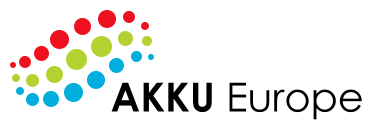
General information
| |||||||||||||||||||||
| Kind of tool: | Checklist | ||||||||||||||||||||
| Target group: | Executives, owners and managing directors | ||||||||||||||||||||
| Duration in minutes: | 30 minutes | ||||||||||||||||||||
| Description of the tool: | Good staff is indispensable for your company's success. Their success depends largely on the employees. Whether people contribute their ideas and skills to the company depends largely on the quality of your personnel management. The decisive challenges for good personnel management are: increase the attractiveness as an employee and find, promote and retain good employees. The tool can be used by the entrepreneur himself – even without the support of an internal or external consultant. The checklist supports the prioritization of the right and necessary need for action. | ||||||||||||||||||||
| Benefit of the tool: | In the Check Personnel Management you will find many suggestions for good personnel management. The check helps you to empower and motivate the employees so that good performance can be achieved. | ||||||||||||||||||||
| Duration: | 30 minutes | ||||||||||||||||||||
| How to use the tool: | The checklist consists of 12 parts: - Personnel planning - Staff development - Personnel recruitment - Motivating personnel measures - Good working atmosphere - Internal communication as a management task - Targeted use of the diversity of different people - Employer attractiveness - Basic attitude of employees - Clarifying and conveying values and principles - Know your own strengths and weaknesses - Plan of action Please check according to the "traffic light system" which statements apply to you and your company (green), which are partly true (blue) and which are rather not true (red). In the action plan, define the most important measures that you want to tackle in your company. Look at all those points where you have ticked urgent need for action (red) or need for action (blue). | ||||||||||||||||||||
| Floor and Area: |
| ||||||||||||||||||||
| Source: | D-IALOGO | ||||||||||||||||||||
 The European Commission's support for the production of this publication does not constitute an endorsement of the contents, which reflect the views only of the authors, and the Commission cannot be held responsible for any use which may be made of the information contained therein  The materials published on the AKKU project website are classified as Open Educational Resources' (OER) and can be freely (without permission of their creators): downloaded, used, reused, copied, adapted, and shared by users, with information about the source of their origin. | |||||||||||||||||||||